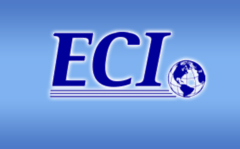Continuous Countercurrent Tangential Chromatography For Purification of High Value Therapeutic Proteins
Abstract
One of the main challenges in the development of integrated continuous processes for the production of high value therapeutic proteins is the replacement of traditional column chromatography, which tends to dominate current downstream processing. Continuous Countercurrent Tangential Chromatography (CCTC) has been designed to provide truly continuous product capture and purification using a column-free system that overcomes many limitations of traditional column chromatography. All operations in CCTC are conducted on a moving slurry that is continuously pumped through a cascade of static mixers (for mixing and residence time) and hollow fiber membrane modules (for separation of the fluid phase from the resin particles). For example, host cell proteins and other impurities are removed in the permeate collected through the hollow fiber membrane in the washing step, while the bound product is retained by the membrane. Contacting in the individual steps is performed in a countercurrent fashion, with the flowing slurry moving from stage (module) 1 to stage 2 while the permeate moves in a countercurrent direction. This significantly increases the overall throughput while improving product yield and purification. All of the chromatographic operations are performed simultaneously, with a fraction of the resin being used for binding while the rest of the resin is in the washing, elution, or regeneration steps.
Recent experimental studies (Dutta et al., 2015) have demonstrated that CCTC can be successfully used for initial capture of a monoclonal antibody product from clarified CHO cell cell culture fluid produced in a fed batch bioreactor. Host cell protein removal and antibody yields and purities were similar to that obtained with conventional batch columns, but the CCTC provided a several-fold greater productivity (g purified mAb per liter resin per hr). In contrast to multicolumn systems, CCTC provides true steady-state operation, with the product concentration remaining constant over a multi-hour run. The current talk examines the effects of different resins on the overall performance of the CCTC system. Experiments were performed using different monoclonal antibodies with several Protein A resins, including small particle size prototype resins, having different static binding capacities and particle diameters. Data were obtained for the binding kinetics, the critical filtrate flux needed to avoid fouling, and the extent of particle attrition due to continued recirculation of the resin through the peristaltic pumps. The use of resins with smaller particle diameters significantly reduced internal mass transfer limitations, leading to faster binding kinetics and greater overall productivity. The critical flux was very high (above 500 LMH) for all resins tested. Limited experiments were also performed using ion exchange resins in both bind-and-elute and flow-through mode. The results clearly demonstrate the versatility of Continuous Countercurrent Tangential Chromatography for the continuous purification of high value protein therapeutics like monoclonal antibodies.
